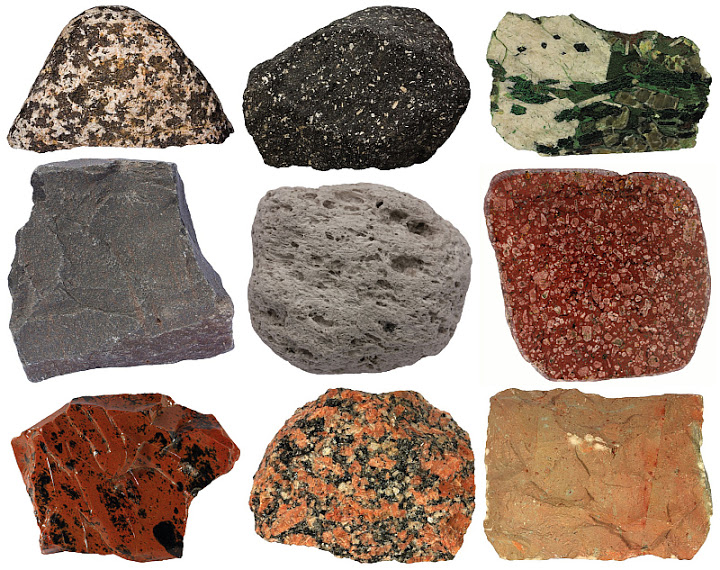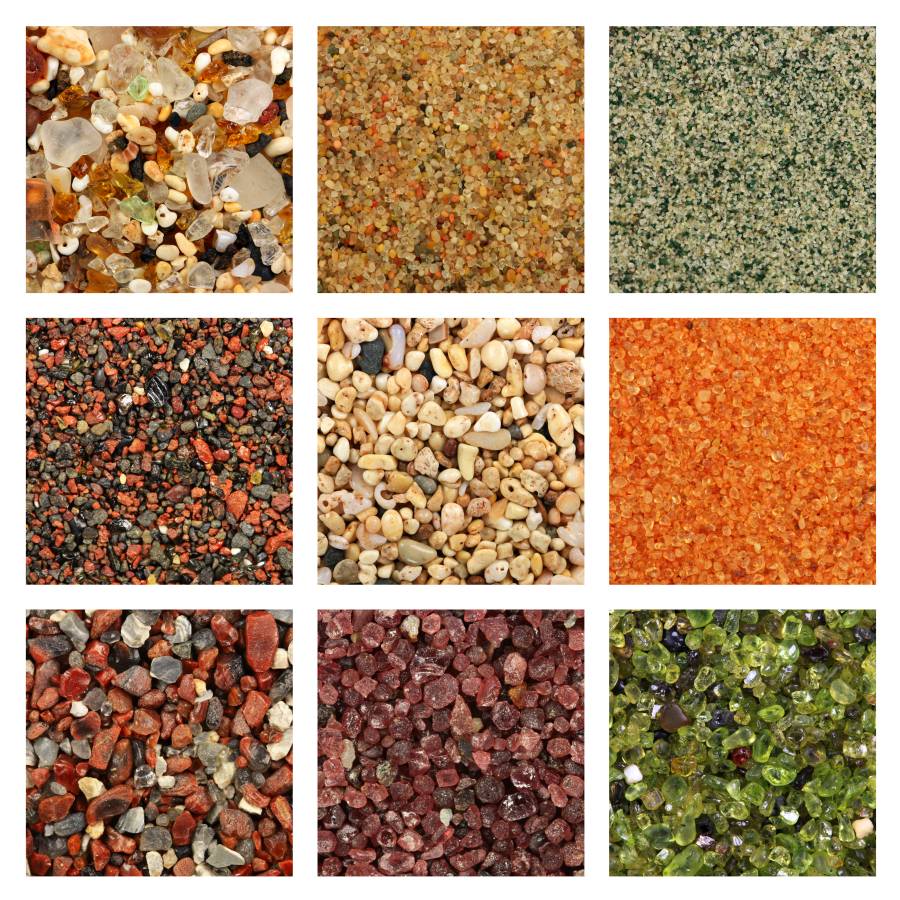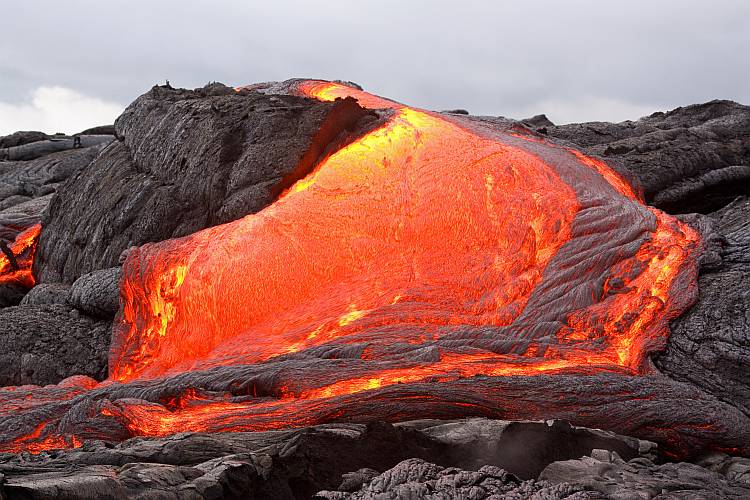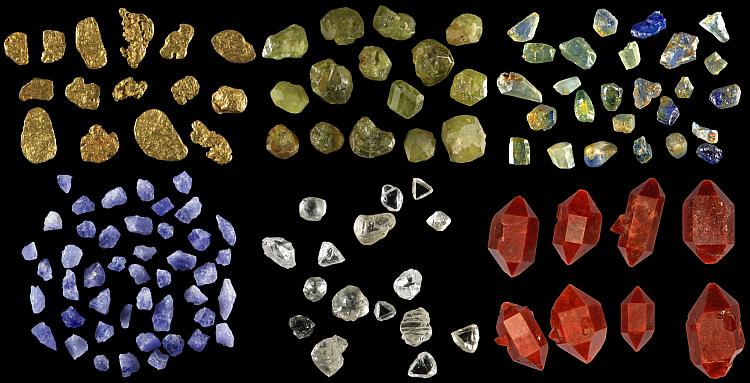What Is a Rock Type?
A rock type is usually defined as a particular kind of rock with a specific set of characteristics1. Rock types are made up of particular combinations of minerals. (Most rocks are composed of minerals.)
Unlike minerals, rocks are not strictly defined. Even rocks of the same type can have very different compositions.
Still, there is a good reason to talk about rock types, even if the term is a bit vague. These mineral combinations appear repeatedly in many places around the world.
You can think of rock types like biomes — such as deserts, savannahs, or rainforests. One desert may be sandy, another rocky, but they share common features like low rainfall. The same applies to rock types. One granite might be white, another red, but both contain similar major minerals — mainly feldspar and quartz.
Below is a list of major rock types that geologists recognize. While there are many rock classifications (some overlapping), several terms and principles have remained widely accepted over time.
Igneous rocks
It all begins with igneous rocks. The Earth is thought to have been completely molten during its early history, which means that all other rock types ultimately derive from igneous rocks.
Igneous rocks are formed through the cooling and solidification of molten rock, either magma beneath the surface or lava at the surface. They are one of the three main rock types, alongside sedimentary and metamorphic rocks. Depending on where they form, igneous rocks are classified as intrusive (plutonic) or extrusive (volcanic). Intrusive rocks, like granite, cool slowly underground, allowing large crystals to grow. Extrusive rocks, such as basalt and pumice, cool quickly on the surface and often have fine-grained or even glassy textures.
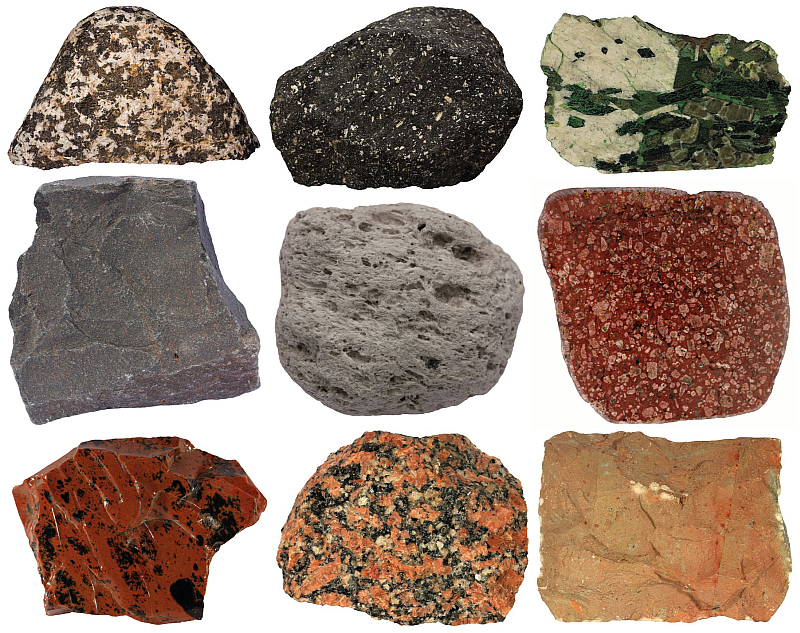
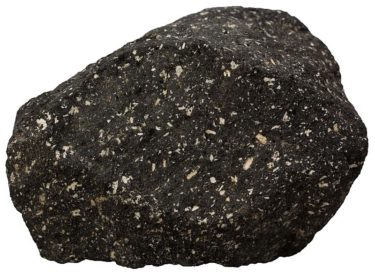
Andesite
Andesite is a volcanic rock with an intermediate composition. It is more felsic than basalt but more mafic than dacite. The primary minerals are plagioclase and hornblende. Andesite is commonly found in subduction zone volcanoes. It is typically dark gray and may contain phenocrysts of plagioclase (usually andesine), biotite, and hornblende. Andesite is the extrusive equivalent of diorite.
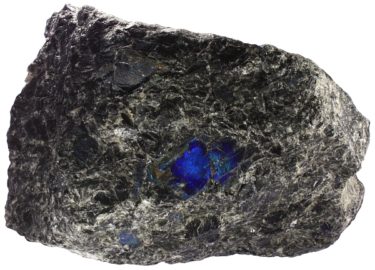
Anorthosite
Anorthosite is a plutonic rock composed of more than 90% plagioclase. It is a cumulate rock, formed when plagioclase crystals floated to the top of a mafic magma chamber and solidified. Some anorthosites exhibit stunning iridescent colors known as labradorescence, making them valuable ornamental stones. Anorthosite is also abundant on the Moon, where it forms much of the bright highland regions.
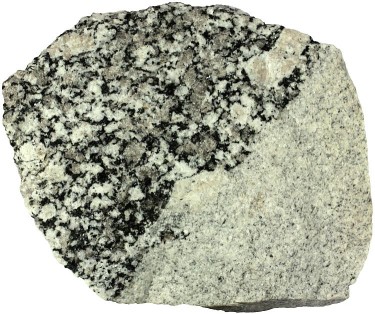
Aplite
Aplite is a fine-grained, typically light-colored plutonic rock. It usually forms in narrow cracks where rapid cooling limits crystal growth. Although aplites can range in composition from granite to gabbro, the term most commonly refers to fine-grained granitic rocks.
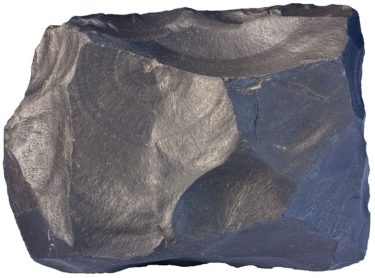
Basalt
Basalt is a very common dark-colored volcanic rock composed of calcic plagioclase (usually labradorite), clinopyroxene (augite), and iron ore (titaniferous magnetite). It may also contain minerals like olivine, quartz, and hornblende. Basalt is the extrusive equivalent of gabbro, and most of the oceanic crust consists of basalt or similar rocks like gabbro and diabase.
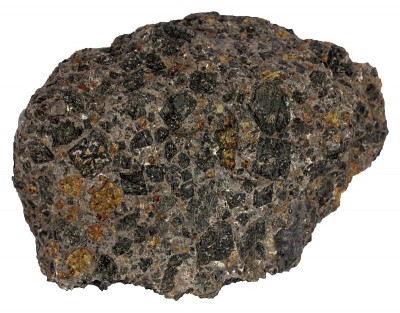
Basanite
Basanite is a volcanic rock similar to basalt, but with lower silica content and typically more alkali metals. It often contains olivine, pyroxene, and feldspathoid phenocrysts. A similar rock lacking olivine is known as tephrite, while limburgite is a glassy variety of nepheline basanite.

Carbonatite
Carbonatite is an igneous rock primarily composed of carbonate minerals. Both volcanic and plutonic types exist, such as alvikite (volcanic) and sövite (plutonic), both dominated by calcite. Carbonatites are commonly associated with alkaline igneous rocks and often serve as important sources of minerals like apatite, rare earth elements, and niobium.
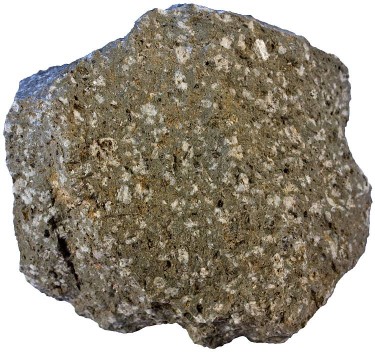
Dacite
Dacite is a felsic volcanic rock with composition between andesite and rhyolite. It forms in subduction zone volcanoes, such as those of the Cascades. When solidified underground, dacitic magma becomes granodiorite.
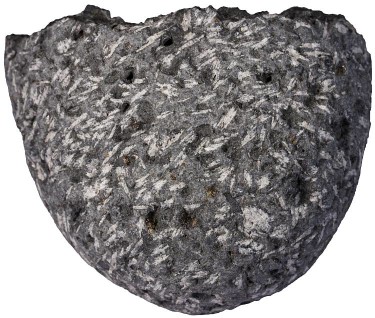
Diabase
Diabase is a dark, mafic igneous rock compositionally similar to basalt and gabbro, but with texture in between. It often forms shallow intrusions like dikes and sills. Diabase turns into basalt if cooled rapidly or into gabbro with slow cooling.
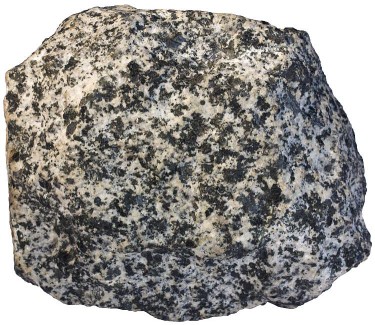
Diorite
Diorite is a plutonic rock that contains sodium-rich plagioclase and hornblende. It is the intrusive equivalent of andesite and sits compositionally between granite and gabbro.
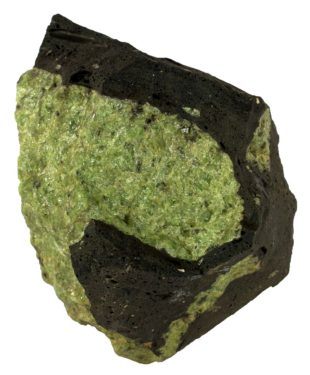
Dunite
Dunite is an ultramafic plutonic rock composed of more than 90% olivine. It is a subtype of peridotite and abundant in Earth’s mantle, though rare at the surface. The term “olivine rock” is a synonym, and “olivinite” refers to a variety rich in magnetite.
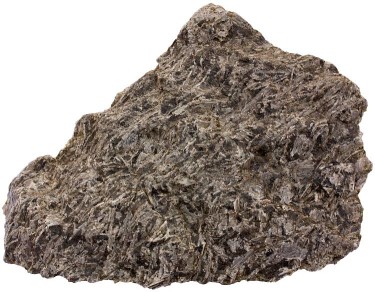
Foyaite
Foyaite is a rare igneous rock that consists of nepheline and alkali feldspar. It has a trachytic texture and is considered a variety of nepheline syenite.
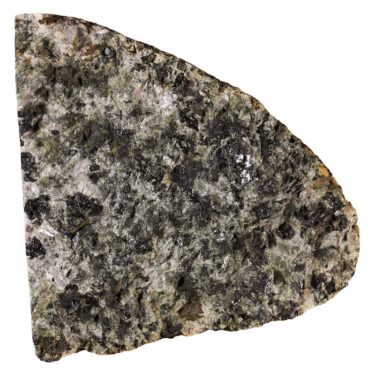
Gabbro
Gabbro is a coarse-grained, dark-colored intrusive igneous rock. It shares the same composition as basalt (its extrusive equivalent) and diabase (a texturally intermediate rock also known as dolerite or microgabbro).
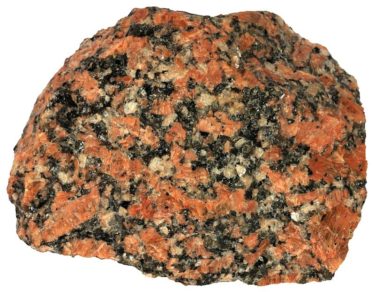
Granite
Granite is a widely common plutonic rock composed mainly of feldspar and quartz. Although primarily igneous, some high-grade metamorphic rocks closely resemble granite and are sometimes referred to as such.
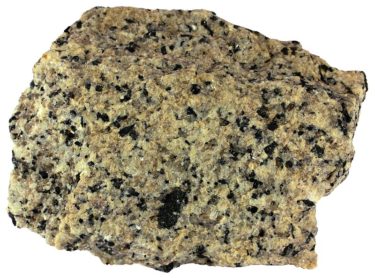
Granodiorite
Granodiorite is a quartz-rich plutonic rock (granitoid) dominated by plagioclase feldspar. It is compositionally between granite and tonalite, and contains more quartz than diorite. Granodiorite is often mistaken for granite.
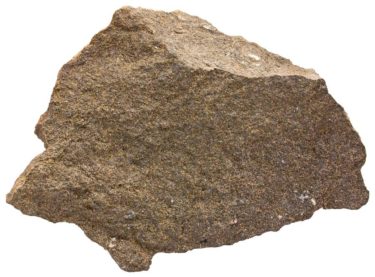
Harzburgite
Harzburgite is a type of peridotite composed of orthopyroxene and olivine. It represents mantle residue after basaltic magma has been extracted. Although abundant in the mantle, it is rare on the Earth’s surface.
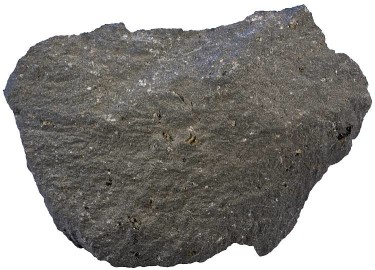
Hawaiite
Hawaiite is a volcanic rock that resembles basalt but contains more alkali metals. It is classified as a sodic variety of trachybasalt.

Hornblendite
Hornblendite is an ultramafic plutonic rock composed almost entirely of hornblende. It crystallizes from water-rich magma, which promotes the formation of hydrous hornblende over pyroxene.
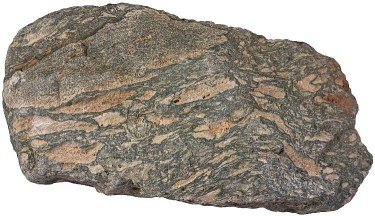
Ignimbrite
Ignimbrite is a pyroclastic rock formed from extremely hot, fast-moving clouds of volcanic ash, gas, and rock fragments known as pyroclastic flows. These fiery deposits may also be called welded tuff or ash-flow tuff.

Ijolite
Ijolite is a rare plutonic igneous rock composed of nepheline and pyroxene. It is classified as a foidolite, meaning feldspathoids dominate over feldspars in its mineral composition.
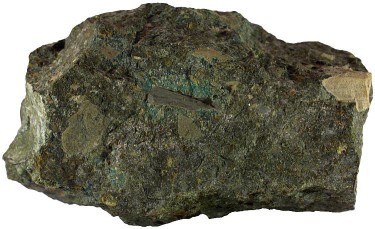
Kimberlite
Kimberlite is an ultramafic volcanic rock composed primarily of olivine, along with minerals like phlogopite, serpentine, and diopside. It is the primary host rock for diamonds and forms in pipe-like bodies called diatremes, created by explosive eruptions.
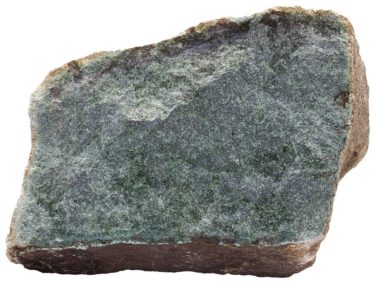
Komatiite
Komatiite is a rare ultramafic lava rock that formed through very high degrees of partial melting. It is chemically similar to peridotite and often displays spinifex texture — long olivine crystals. Komatiites no longer form today, likely due to lower temperatures in Earth’s mantle.
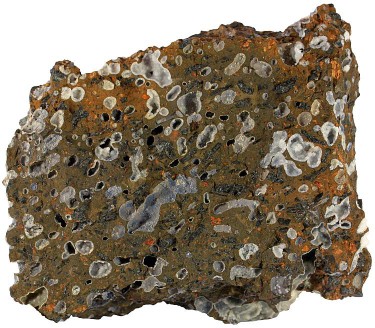
Limburgite
Limburgite is a glassy volcanic rock and a variety of basanite. It is rich in nepheline, a feldspathoid mineral, and notably contains no feldspars.
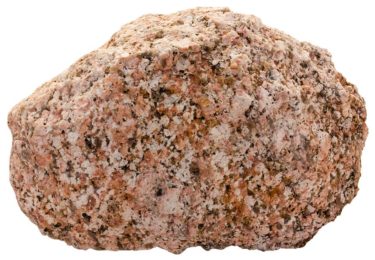
Monzonite
Monzonite is a plutonic rock that is compositionally intermediate between syenite and diorite. It contains roughly equal amounts of potassium feldspar and plagioclase, with little or no quartz.
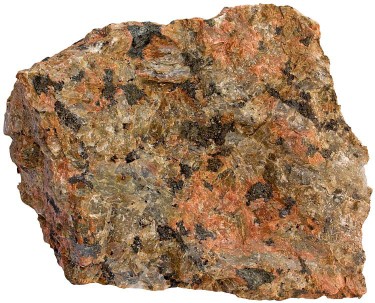
Nepheline syenite
Nepheline syenite is a silica-poor, alkali-rich plutonic rock that contains minerals such as nepheline, alkali feldspar, and alkali pyroxene or amphibole. Quartz is absent. Its volcanic equivalent is phonolite.
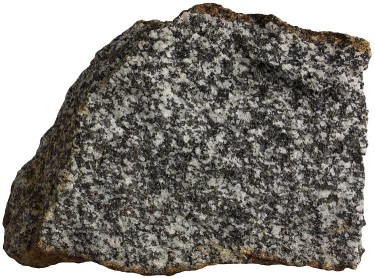
Norite
Norite is a type of gabbro where the dominant pyroxene mineral is orthopyroxene. It shares many characteristics with gabbro but has a distinct mineral composition.
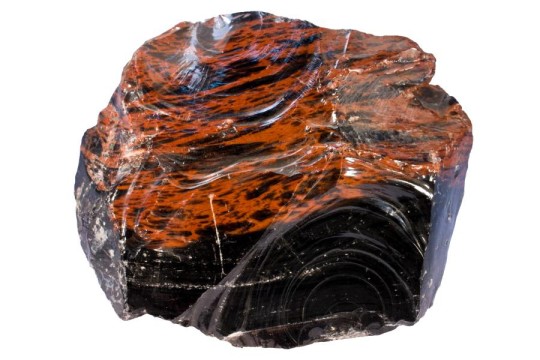
Obsidian
Obsidian is a volcanic glass that forms when lava cools so quickly that crystals do not have time to grow. It is usually rhyolitic in composition and black or reddish in color. Obsidian is often found alongside pumice.
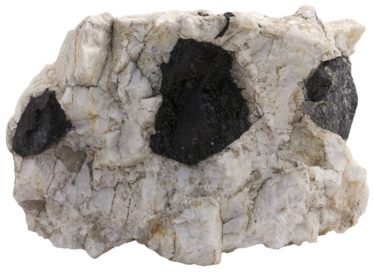
Pegmatite
Pegmatite is an exceptionally coarse-grained plutonic rock, typically granitic in composition. Simple pegmatites contain feldspar, mica, and quartz, while complex pegmatites may be rich in rare minerals, making them important mineral resources.
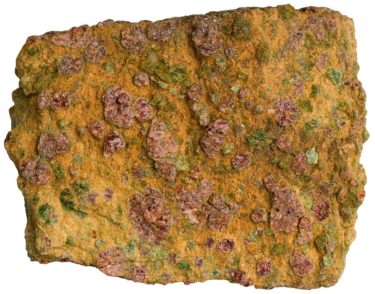
Peridotite
Peridotite is the dominant rock type of Earth’s mantle. Fresh peridotite is usually dark green, but surface-exposed samples are often altered to serpentinite. Common subtypes include harzburgite, dunite, and lherzolite.
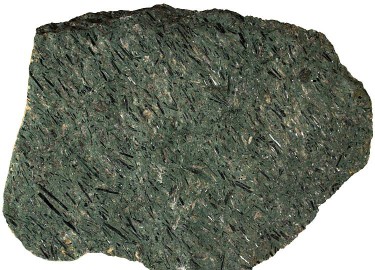
Phonolite
Phonolite is an alkaline volcanic rock composed of fine-grained alkali feldspar, nepheline, and alkali pyroxenes or amphiboles. It may display porphyritic texture and is the extrusive counterpart of nepheline syenite.
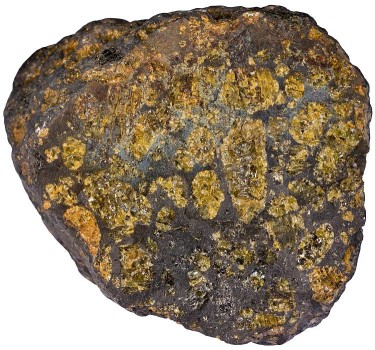
Picrite
Picrite is a mafic volcanic rock similar to basalt, but richer in olivine. It often forms as an olivine cumulate, where olivine crystals settle to the base of lava flows, resulting in an ultramafic composition.
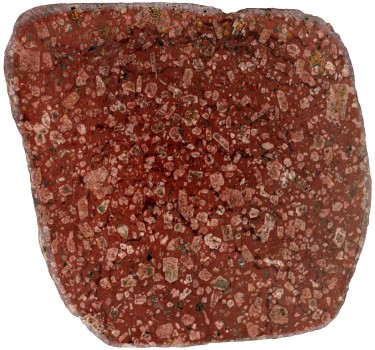
Porphyry
Porphyry is an igneous rock with a porphyritic texture—large crystals (phenocrysts) embedded in a fine-grained matrix. This texture indicates that the rock began crystallizing before erupting to the surface.
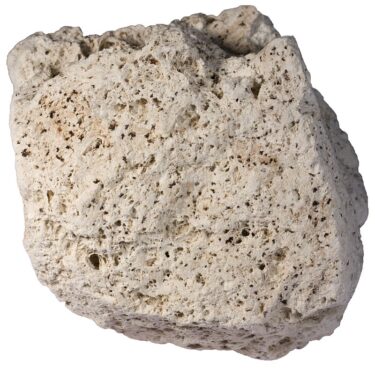
Pumice
Pumice is a light, vesicular volcanic rock formed during explosive eruptions. It is so porous that it can float on water. Most pumice is light-colored and felsic in composition.
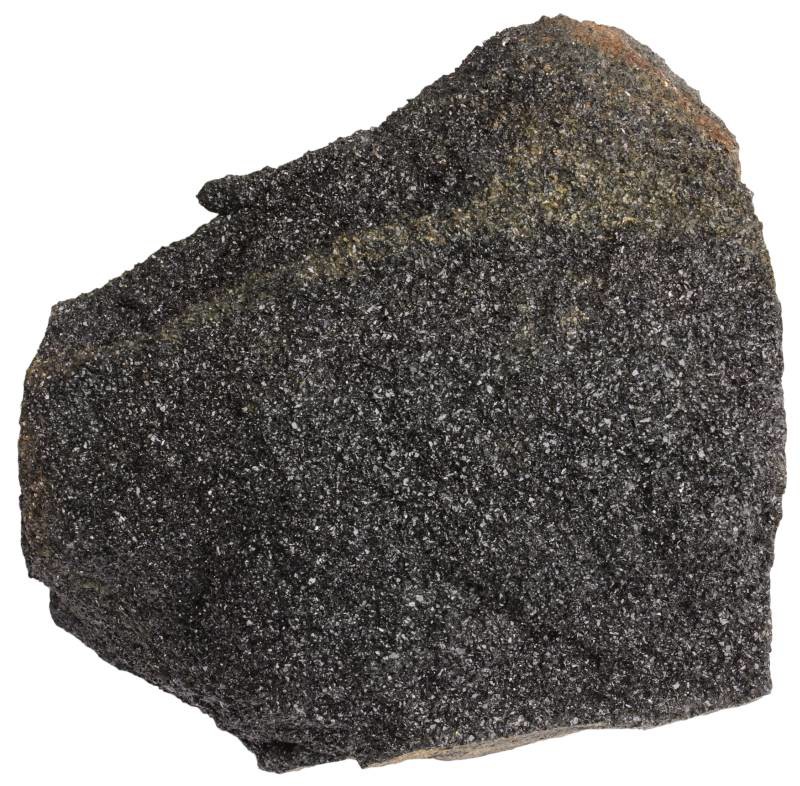
Pyroxenite
Pyroxenite is a cumulate plutonic rock composed of over 90% pyroxene minerals. It is commonly associated with ultramafic rocks like peridotite and mafic rocks such as gabbro.
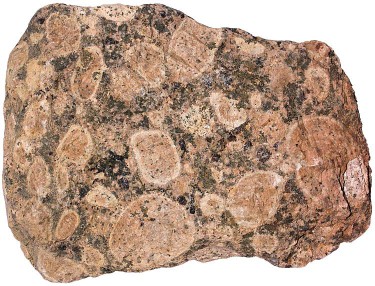
Rapakivi
Rapakivi is a granite variety distinguished by K-feldspar phenocrysts mantled by plagioclase. It forms in anorogenic (intraplate) settings and has a distinctive texture and appearance.
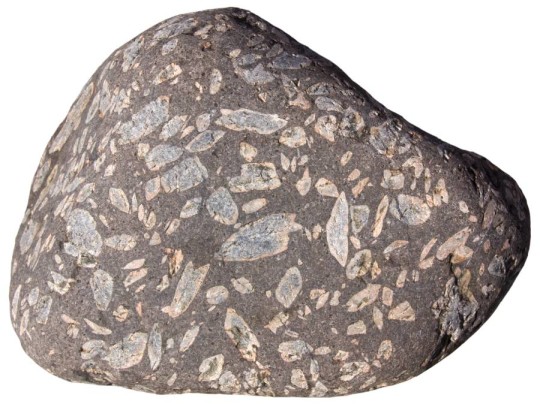
Rhomb-porphyry
Rhomb-porphyry is a rare volcanic rock with wedge-shaped anorthoclase phenocrysts. It is the extrusive equivalent of larvikite and compositionally a trachyandesite (latite).
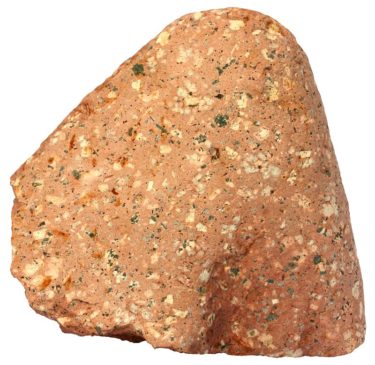
Rhyolite
Rhyolite is a felsic volcanic rock and the extrusive equivalent of granite. It is often found in explosive volcanic environments and can form pumice or obsidian due to its high viscosity. Many porphyritic rocks are rhyolitic in composition.

Scoria
Scoria is a dark-colored, mafic volcanic rock with abundant vesicles. It is similar to pumice but denser, more mafic, and typically has larger vesicles.

Sövite
Sövite is a plutonic carbonatite dominated by calcite. It is the most common carbonatite variety and is often mined as a source of economic minerals.
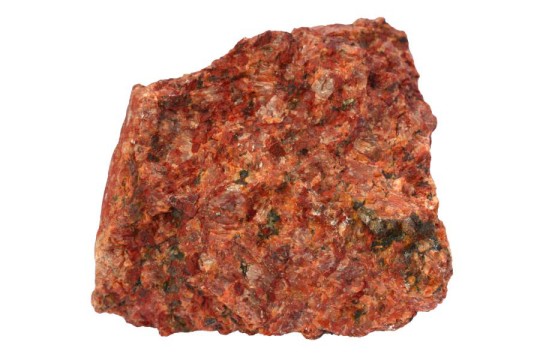
Syenite
Syenite is a quartz-poor plutonic rock dominated by potassium feldspar over plagioclase. It resembles granite but lacks quartz. Nepheline syenite is a variant with nepheline replacing some feldspar.
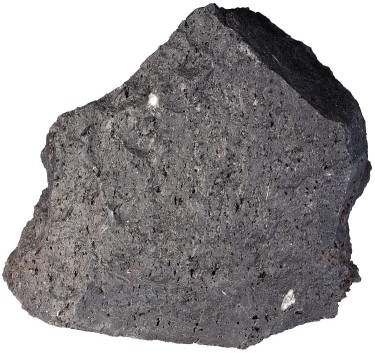
Tephrite
Tephrite is a volcanic rock similar to basalt but rich in feldspathoid minerals and low in olivine. It closely resembles basanite but lacks significant olivine content.
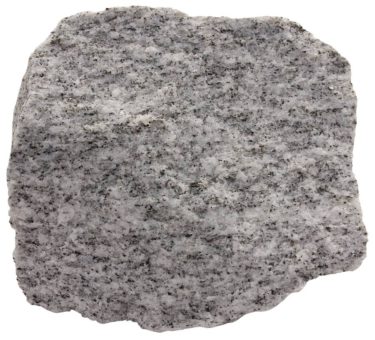
Tonalite
Tonalite is a granitoid rock in which over 90% of the feldspar is plagioclase. Related rock types include trondhjemite and plagiogranite.
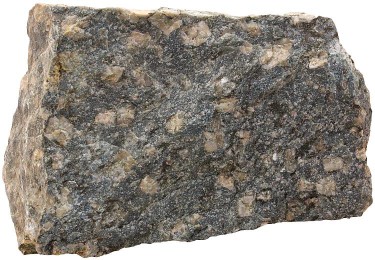
Trachyandesite
Trachyandesite is a volcanic rock with intermediate composition between trachyte and andesite. It is closely related to monzonite and includes rhomb-porphyry as a subtype.

Trachyte
Trachyte is a feldspar-rich volcanic rock and the extrusive equivalent of syenite. With increasing quartz content, trachyte grades into rhyolite.
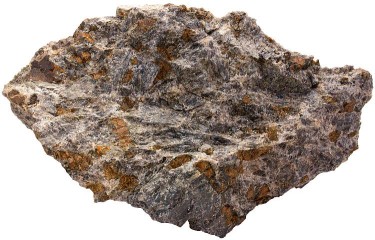
Troctolite
Troctolite is a variety of gabbro that lacks pyroxene. It is a cumulate rock and is commonly associated with gabbro, norite, and anorthosite in mafic intrusions.
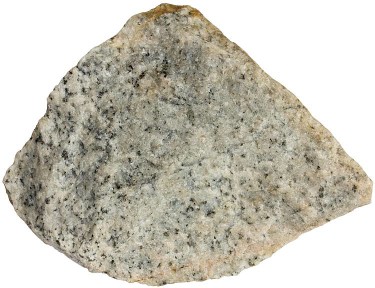
Trondhjemite
Trondhjemite is a light-colored variety of tonalite composed mainly of sodic plagioclase, quartz, and biotite. It is part of the tonalite–trondhjemite–granodiorite (TTG) suite.
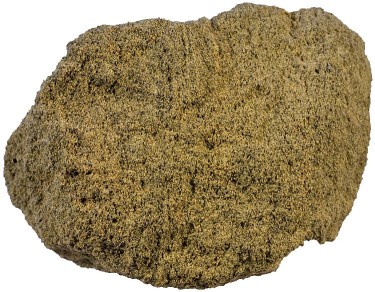
Tuff
Tuff is a consolidated and lithified rock formed from volcanic ash. It is the volcanic analogue of sandstone and varies widely in composition and texture depending on the eruption.
Sedimentary rocks
Sedimentary rocks are formed through the consolidation of loose sediments, which are mostly fragments of pre-existing, weathered rocks. There are three primary types of sedimentary rocks: mudstone, sandstone, and limestone.
Admittedly, this is a simplified classification, but in terms of volume, the vast majority of sedimentary rocks fall into these categories—especially if the definitions are interpreted broadly. For example, “sandstone” can be understood to include siltstone and conglomerate, while “limestone” encompasses all sedimentary carbonate rocks. There are notable exceptions that do not fit neatly into this scheme—such as evaporites, coal, and chert—but volumetrically, they are significantly less abundant. Nevertheless, these exceptions are, of course, included in the list below.
Sedimentary rocks typically form in layers, or strata, which often preserve a record of past environments and biological activity. Fossils—remains or traces of ancient organisms—are almost exclusively found in sedimentary rocks, making them crucial for understanding the history of life on Earth. Bedding structures, ripple marks, and mud cracks also help geologists reconstruct ancient landscapes and depositional environments.
These rocks are especially common at the Earth’s surface, even though they make up only a thin veneer compared to the vast volume of igneous and metamorphic rocks beneath. Despite their relatively small proportion of the Earth’s crust, sedimentary rocks are of immense practical importance. They host the world’s major reservoirs of groundwater, hydrocarbons (like oil and gas), and many economically valuable minerals such as iron ore and phosphate.
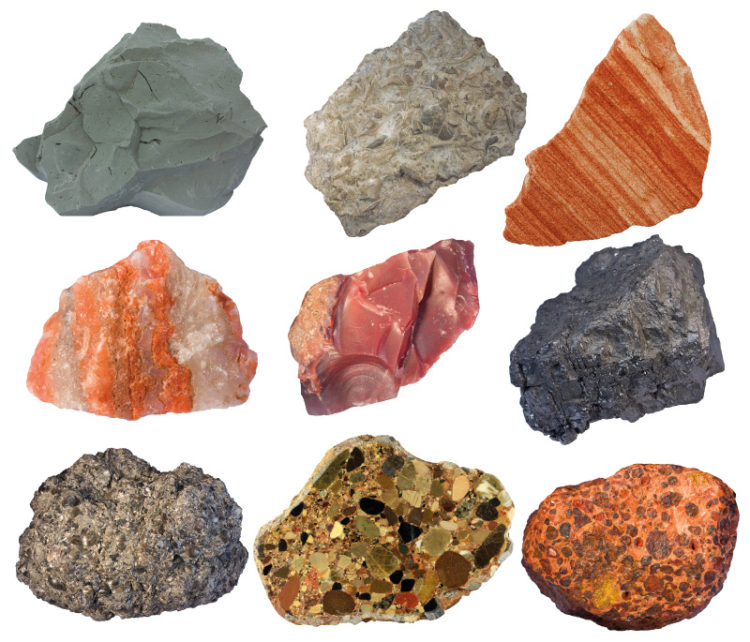

Arkose
Arkose is a feldspar-rich (25%) sandstone, usually coarse-grained and composed of angular grains. It is a relatively immature sediment derived from nearby granitic rocks.
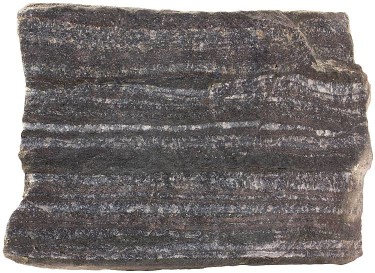
Banded iron formation
Banded iron formation is a metasedimentary rock with alternating silica- and iron-rich bands. It is the main source of iron and crucial to modern industry.
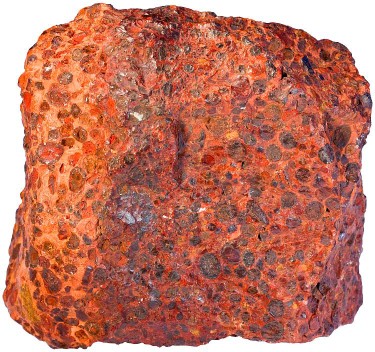
Bauxite
Bauxite is an aluminum-rich sedimentary rock. It contains aluminum hydroxide minerals like gibbsite and is the principal ore of aluminum.
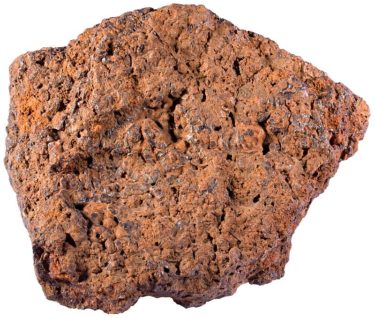
Bog iron
Bog iron is a porous iron ore formed in wetlands, made of limonite with clay or plant debris. It forms by bacterial and algal oxidation of iron-rich water.
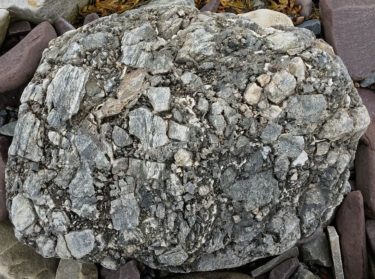
Breccia
Breccia is a coarse-grained rock composed of angular fragments cemented together. It may form through volcanic eruptions, tectonics, landslides, or other processes.
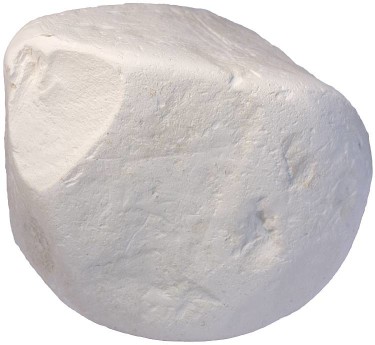
Chalk
Chalk is a soft, porous limestone composed of calcareous shells of marine microorganisms like coccoliths and foraminifers. It is often associated with chert and typically Cretaceous in age.
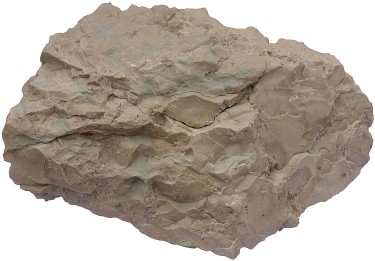
Chert
Chert is a compact sedimentary rock made of tiny quartz crystals. It commonly forms as nodules or layers in carbonate rocks. Flint is a dark variety of chert.
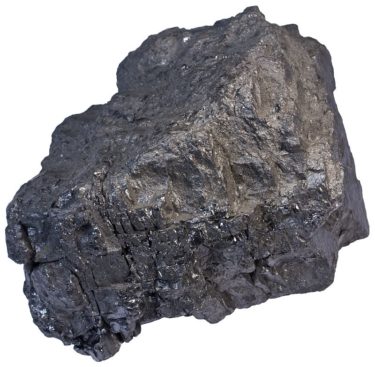
Coal
Coal is a carbon-rich rock formed from lithified peat. It is a major fossil fuel, though its usage is declining in many developed countries.

Conglomerate
Conglomerate is a lithified gravel composed of rounded clasts over 2 mm in size. It forms in riverbeds or beaches and differs from breccia, which has angular clasts.
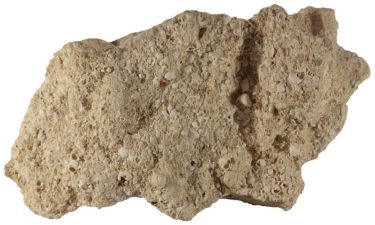
Coquina
Coquina is a coarse-grained limestone composed of shell fragments. It is related to calcarenite, which consists of finer fossil debris.
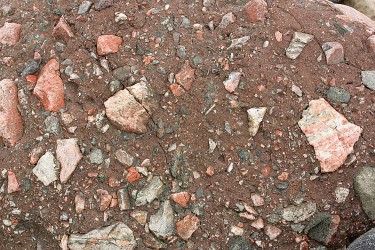
Diamictite
Diamictite is a poorly sorted sedimentary rock with clasts ranging from clay to boulders. It is often glacial in origin, but may also form from volcanic or submarine processes.
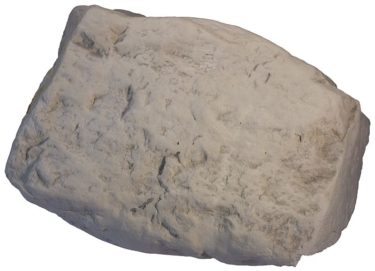
Diatomite
Diatomite (diatomaceous earth) is a soft, light-colored rock composed of siliceous shells of diatoms. It is used industrially and found in marine or lake deposits.
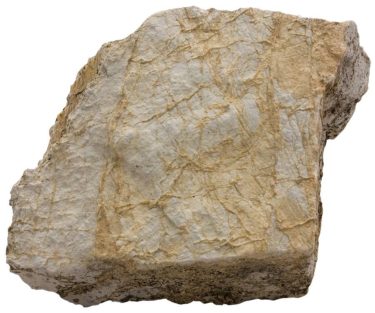
Dolomite
Dolomite (dolostone) is a carbonate rock containing more than 50% dolomite mineral. It may act as a reservoir rock for hydrocarbons.
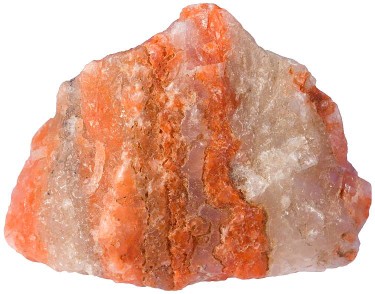
Evaporite
Evaporite forms from crystallized salts in hypersaline water environments like lagoons. Common types include rock salt and gypsum.
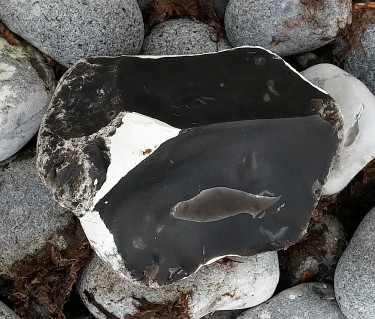
Flint
Flint is a dark gray or black variety of chert. It is widely known among the public and used synonymously with chert in non-technical contexts.
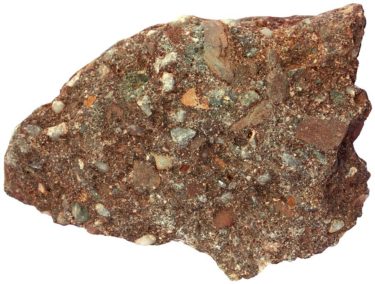
Graywacke
Graywacke is a coarse-grained, dark-colored sandstone containing clay and rock fragments. It is poorly sorted and of turbiditic marine origin.
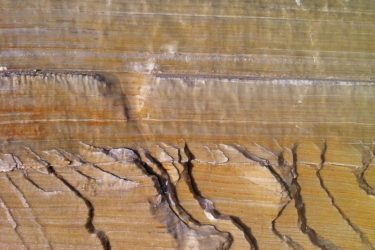
Gypsum
Gypsum is an evaporite rock made of gypsum crystals. It forms in evaporitic settings and occurs as alabaster, satin spar, or selenite.

Laterite
Laterite is a reddish weathering product of basaltic rocks, formed in hot to temperate climates. It is a residual soil rich in iron and aluminum.
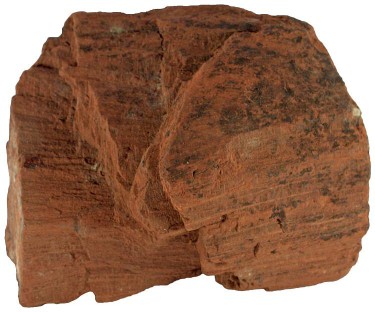
Lignite
Lignite is a soft, brownish coal of low quality, intermediate between peat and sub-bituminous coal. It is also known as brown coal.

Limestone
Limestone is a sedimentary rock mainly composed of calcium carbonate. It forms in marine environments and may also precipitate chemically as travertine or tufa.
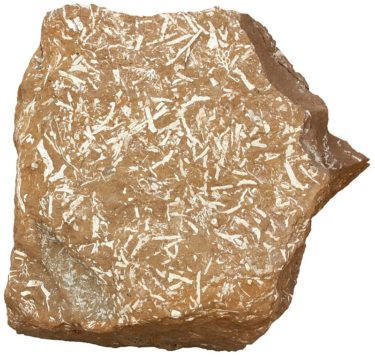
Oil shale
Oil shale is a type of shale containing kerogen, which yields oil when heated. It is an abundant but low-efficiency fossil fuel source.
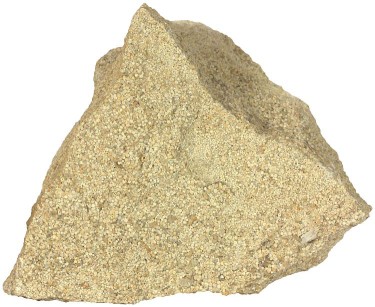
Oolite
Oolite is a sedimentary rock made up of ooids—small spherical grains with concentric layers. Most oolites are composed of calcium carbonate.
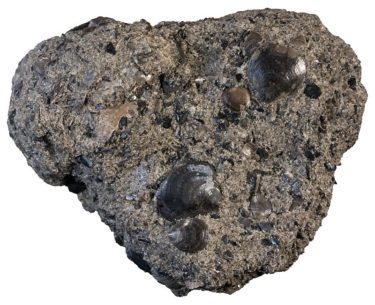
Phosphorite
Phosphorite is a sedimentary rock rich in phosphate minerals. It contains phosphate in forms like nodules, bones, or shell fragments and is economically important.

Sandstone
Sandstone is a lithified sand composed mostly of quartz. It includes many subtypes like arkose, graywacke, and orthoquartzite, and is widespread globally.
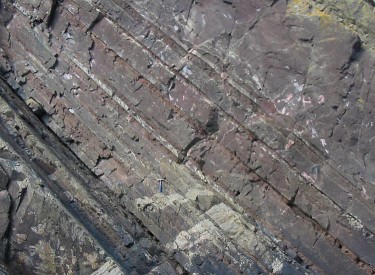
Shale
Shale is a fine-grained, laminated sedimentary rock made mostly of clay minerals. It is a major source rock for crude oil and natural gas.
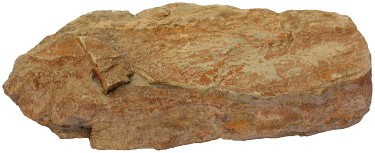
Siltstone
Siltstone is a fine-grained sedimentary rock intermediate between sandstone and shale. It is composed mainly of silt-sized particles and may include sand and clay.

Tillite
Tillite is a poorly sorted glacial rock formed by the compaction of glacial till. It is similar to diamictite but implies a glacial origin.
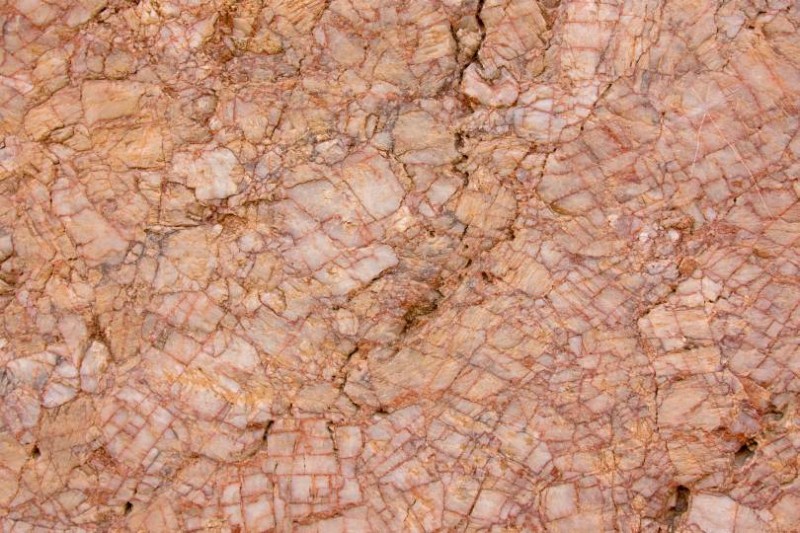
Travertine
Travertine is a chemically precipitated limestone, often forming stalactites and stalagmites in caves. It is also found in calcite veins and is related to tufa.

Turbidite
Turbidite is a layered sedimentary deposit formed by underwater turbidity currents. It consists of alternating fine and coarse material layers.

Umber
Umber is a brown marine sediment associated with black smokers. It is valued as a pigment and found in Cyprus-type sulfide deposits.
Metamorphic rocks
Metamorphic rocks are formed from pre-existing rocks through mineralogical and/or structural changes. Metamorphism occurs in the solid state, under elevated pressure and temperature, typically at considerable depths within the Earth’s crust1.
Metamorphic rocks originate from all types of protoliths—igneous, sedimentary, or even older metamorphic rocks. The transformation can involve recrystallization, alignment of minerals into foliated textures, or the growth of entirely new minerals stable under the new conditions. Common examples include schist, gneiss, and marble, each reflecting different degrees and types of metamorphic alteration.
Because metamorphism generally obliterates original textures and fossils, metamorphic rocks can be more difficult to interpret than sedimentary ones. However, their mineral assemblages provide valuable information about the pressure-temperature history of the rock, which geologists use to reconstruct tectonic processes such as mountain building. Metamorphic rocks also tend to be mechanically strong, forming the cores of many ancient mountain ranges and continental shields.
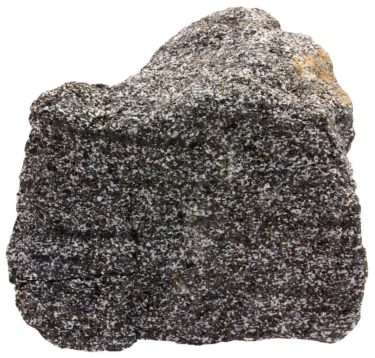
Amphibolite
Amphibolite is a metamorphic rock composed of amphibole (typically hornblende) and plagioclase. It is common and should not be confused with the metamorphic facies of the same name.
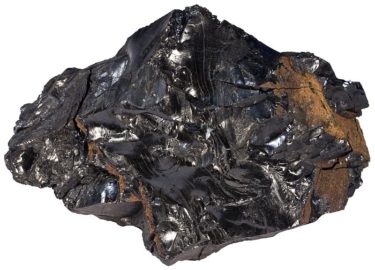
Anthracite
Anthracite is the highest-rank coal, containing over 90% carbon. It has a high calorific value and very low volatile content, formed through metamorphism of lower-grade coal.
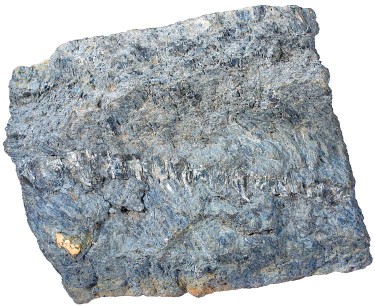
Blueschist
Blueschist is a bluish metamorphic rock rich in glaucophane. It forms at high pressures and low temperatures, typically in subduction zones, from basaltic protoliths.
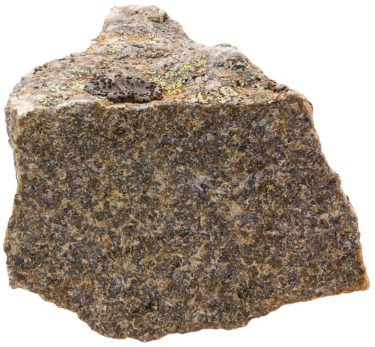
Charnockite
Charnockite is a dry, orthopyroxene-bearing metamorphic rock. Though often called granite, it is not igneous in origin and formed through metamorphic processes.
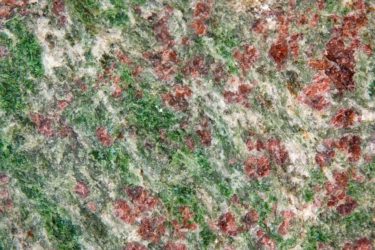
Eclogite
Eclogite is a dense, colorful metamorphic rock made of red garnet and green omphacite. It forms under high-pressure conditions from basaltic precursors.
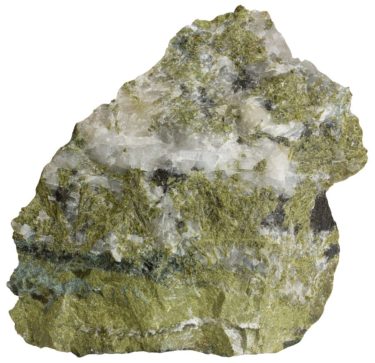
Epidosite
Epidosite is a hydrothermally altered basaltic rock composed mainly of epidote and quartz. It forms through hydrothermal metamorphism of mafic igneous rocks like basalt or diabase.
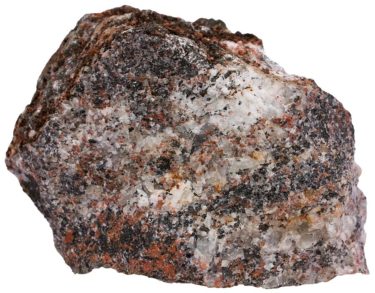
Fenite
Fenite is a metasomatic rock formed around carbonatite-alkaline intrusions. It is derived from granitic rocks altered by alkali-rich fluids, replacing original minerals with new alkaline phases.

Gneiss
Gneiss is a coarse-grained, banded metamorphic rock formed at depth beneath mountain ranges. Its composition varies, but most gneissic rocks are granitic in nature.

Granulite
Granulite is a high-grade metamorphic rock typically formed in granulite facies conditions. Its composition varies widely, and the term is often debated in petrology due to its imprecise definition.
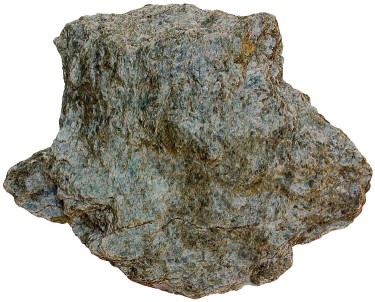
Greenschist
Greenschist is a metamorphic rock rich in green minerals such as chlorite, actinolite, and epidote. It typically forms from mafic igneous rocks under low-grade regional metamorphism.
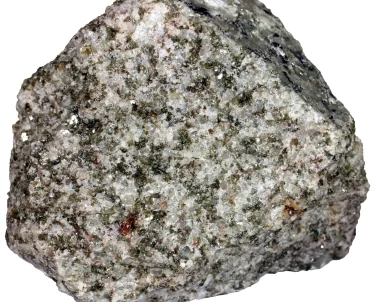
Greisen
Greisen is a pneumatolytically altered granitic rock rich in quartz and mica, often containing rare minerals like cassiterite and tourmaline. It forms by alteration from magmatic fluids.
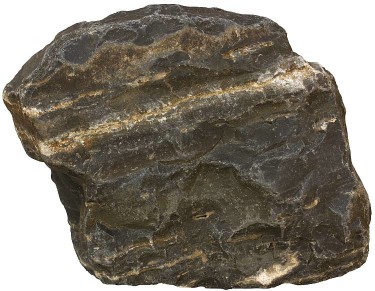
Hornfels
Hornfels is a fine-grained, compact rock formed through contact metamorphism at high temperature and low pressure. It is hard and dense, with a splintery fracture.
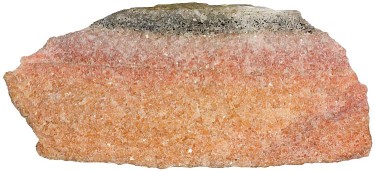
Marble
Marble is a metamorphic rock formed from limestone or dolomite, consisting mostly of recrystallized calcium carbonate. It is commonly used in sculpture and construction.
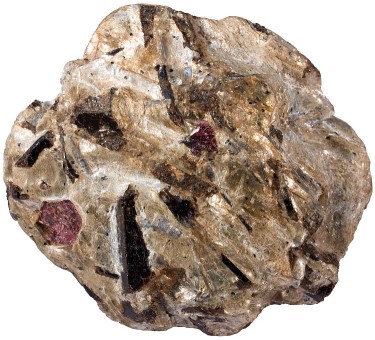
Metapelite
Metapelite is a metamorphosed pelitic rock derived from clay-rich sedimentary rocks such as shale or mudstone. It often contains micas, garnet, and other aluminum-rich minerals.
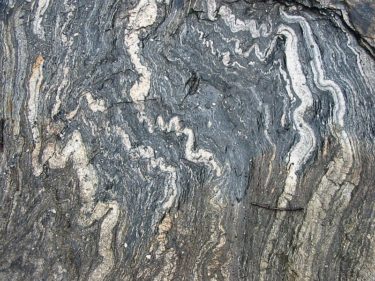
Migmatite
Migmatite is a mixed rock composed of dark metamorphic layers and light-colored igneous components. It forms under extreme metamorphic conditions involving partial melting.

Mylonite
Mylonite is a highly deformed metamorphic rock characterized by stretched and flattened mineral grains. It forms deep in the crust under ductile deformation conditions in shear zones.
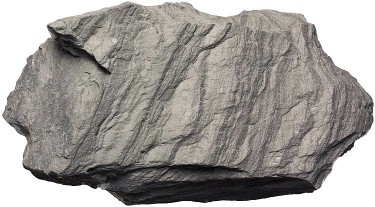
Phyllite
Phyllite is a foliated metamorphic rock that is intermediate in grade between slate and schist. It has a silky sheen due to fine-grained mica or graphite.
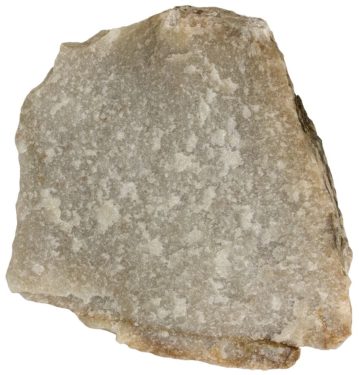
Quartzite
Quartzite is a hard, non-foliated metamorphic rock formed from sandstone. It is composed almost entirely of quartz and is highly resistant to weathering.
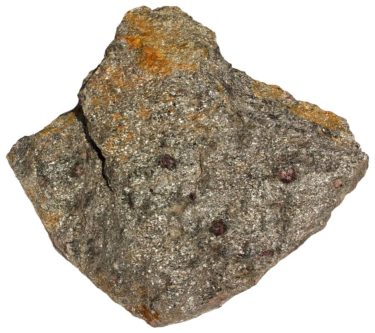
Schist
Schist is a medium- to high-grade metamorphic rock with well-developed foliation and abundant platy or elongated minerals such as mica. It forms during regional metamorphism.
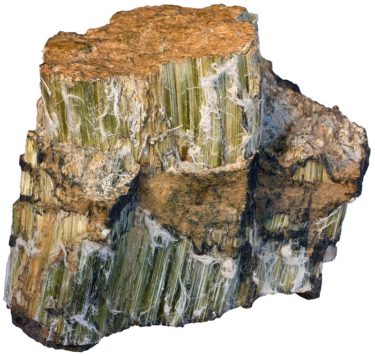
Serpentinite
Serpentinite is a metamorphic rock composed mainly of serpentine minerals. It forms from ultramafic rocks such as peridotite or pyroxenite through hydrothermal alteration.
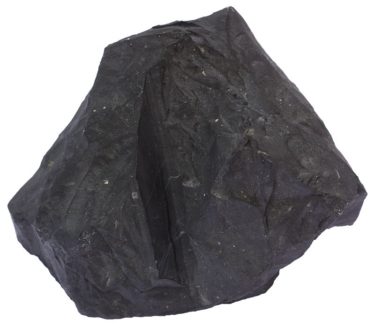
Shungite
Shungite is a rare metamorphic rock composed of structureless carbon. It originates from metamorphosed oil shale, and its exact formation process is still debated.

Skarn
Skarn is a metasomatic rock formed at the contact zone between carbonate rocks and intruding magma. It is rich in calc-silicate and ore minerals.

Slate
Slate is a fine-grained metamorphic rock derived from shale or mudstone. It is known for its slaty cleavage and forms under low-grade metamorphic conditions.

Soapstone
Soapstone is a soft metamorphic rock composed mainly of talc and other silicates. It has a smooth, slippery texture and is often used for carvings and countertops.
You may also like
References
1. Jackson, J. A. (1997). Glossary of Geology, 4th Edition. American Geological Institute.
2. Barth, T. F. W. (2007). Quartzite. In: McGraw Hill Encyclopedia of Science & Technology, 10th Edition. McGraw-Hill. Volume 14. 722.
3. Tilling, Robert I. (2007). Ignimbrite. In: McGraw Hill Encyclopedia of Science & Technology, 10th Edition. McGraw-Hill. Volume 9. 20–21.

